iPhone assists in high-speed photography
Slow-motion recording can help the surgeon see subtle intraocular movements preoperatively.
High-speed photography captures images with a remarkably quick shutter speed, and it is mostly used for capturing moments that are not appreciated with the naked eye. It is the art of photographing a rapidly occurring event. Scientists have used high-speed photography to study physical movement, measuring phenomena such as surface tension and gravitational effects. It is also employed for tracking the accuracy of missiles and rockets and recording the sequence of events at the core of nuclear explosions. Sports photographers use high-speed photography to shoot fast-moving sporting events and to enhance the performance of athletes by analyzing their speed and movements.
Using slo-mo
Human eyes are accustomed to viewing videos at 24 frames per second to 25 frames per second (fps), and it is believed that 30 fps is the final limit of a human eye to appreciate the sequence of movements. High-speed cameras with much faster shutter speed are usually employed for recording videos to assess the fine details of any special event. The iPhone 5S has an inbuilt native feature of recording videos at 120 fps, while the iPhone 6 records at 240 fps. Attaching an iPhone to a slit lamp or microscope with the help of an adaptor can help in recording videos at higher fps on the “slo-mo” mode of the recorder. These videos capture 120 fps; in other words, 120 images are being recorded in a second of a particular event. This provides a detailed analysis of the sequence of events that a normal human eye fails to appreciate.
Clinically, the surgeon opens the camera function on the iPhone and goes to slo-mo mode, just adjacent to video recording. The slo-mo video is recorded just as a normal video recording is done by pressing the red button. This video is recorded at a high fps, and when it is played later, it runs at an eye-friendly rate of 25 fps to 30 fps. Thus, it helps the surgeon to appreciate every minute detail that a normal eye fails to appreciate.
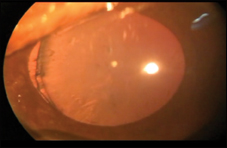
Images: Agarwal A, Narang P
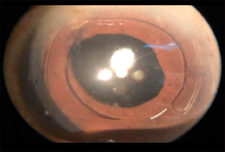
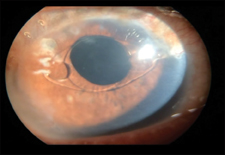
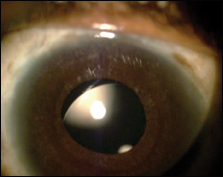
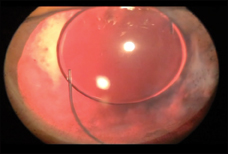
Detecting subtle movements
Subtle movements of intraocular structures such as the iris, lens and capsular bag-IOL complex have crucial clinical implications. Preoperative detection of these subtle intraocular movements often goes unnoticed, and the surgeon may come across a surgical challenge intraoperatively.
In our practice, we have utilized and exploited this scenario to detect subtle intraocular movements such as iridodonesis, phacodonesis (Figure 1) and pseudophakodonesis (Figures 2, 3, 4 and 5). The presence of iridodonesis in an otherwise normal-looking eye should raise the suspicion of compromised zonules or lens instability, and the surgeon can be aware of impending complications that may be encountered in the intraoperative period.
We recommend that all cases of traumatic cataract or cases associated with pseudoexfoliation or connective tissue disorders should be evaluated with high fps recording to detect subtle intraocular movements because this allows the surgeon to be ready with contingency plans if required. Detection of pseudophakodonesis is another important aspect of slo-mo recording because it goes a long way in explaining the process of vitreous disturbance in the eye following a secondary IOL implantation, which can eventually lead to cystoid macular edema. Higher fps recording allows pre-detection and warns the surgeon of the possible challenges inherent in such cases. Apprehending and anticipating a clinical entity and its subsequent repercussions allow the case to be handled in a better way. Adjunctive surgical devices can be considered and prepared before surgery, intraoperative surprises can be curbed, and surgery is more predictable.
Surgeons who have an older version of the iPhone can use third-party applications from iTunes, such as the SloPro app, to record videos at high fps. Various apps are available for Android phone users, too. The use of a smartphone obviates the need to purchase a high-speed camera, and it is comparatively cost-effective.
- For more information:
- Amar Agarwal, MS, FRCS, FRCOphth, is director of Dr. Agarwal’s Eye Hospital and Eye Research Centre. Agarwal is the author of several books published by SLACK Incorporated, publisher of Ocular Surgery News, including Phaco Nightmares: Conquering Cataract Catastrophes, Bimanual Phaco: Mastering the Phakonit/MICS Technique, Dry Eye: A Practical Guide to Ocular Surface Disorders and Stem Cell Surgery and Presbyopia: A Surgical Textbook. He can be reached at 19 Cathedral Road, Chennai 600 086, India; email: dragarwal@vsnl.com; website: www.dragarwal.com.
- Priya Narang, MS, is the director of Narang Eye Care & Laser Centre, Ahmedabad, India. She can be reached at email: narangpriya19@gmail.com.
Disclosure: Agarwal and Narang report no relevant financial disclosures.
